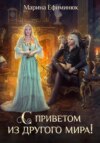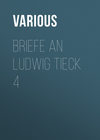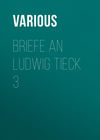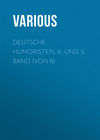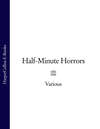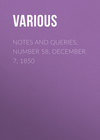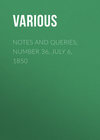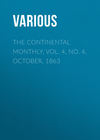Buch lesen: «The Mirror of Literature, Amusement, and Instruction. Volume 19, No. 546, May 12, 1832», Seite 3
"I don't want to preach to any body; and you know how much it fashes me to contend with you."
"Don't say FASHES, say distresses, or annoys, not fashes, for heaven's sake, my dear Lucy."
"Oh, dear, it was very stupid of me to forget it. That was one of the first things you taught me, and it is a many days since I said it last; but it is so strange to me to venture to differ with you, that I get confused, and don't say any thing as right as I could do. Even now I should like to ask, if modesty is a merit, whether nakedness ought to be a show; but I'll say no more, for I dare say you won't make me go there again."
"No, that will be the best way to settle it."
The plot of the Contrast is not, as the reader may perceive, one of fashionable life: it has more of the romance of nature in its composition: the characters are not the drawling bores that we find in fashionable novels, though their affected freaks are occasionally introduced to contrast with unsophisticated humility, and thus exhibit the deformities of high life. The whole work is, however, light as gossamer: we had almost said that a fly might read it through the meshes, without endangering his patience or liberty.
THE LIBRARY OF ENTERTAINING KNOWLEDGE
Maintains its rank in sober, we mean useful, literature. The volume before us contains such matter as is only to be found in large and expensive works, with a host of annotations from the journals of recent travellers and other volumes which bear upon the main subject. This part of the series, describing vegetable substances used for the food of man, is executed with considerable minuteness. A Pythagorean would gloat over its accuracy, and a vegetable diet man would become inflated with its success in establishing his eccentricities. The contents are the Corn-plants, Esculent Roots, Herbs, Spices, Tea, Coffee, &c. &c. In such a multiplicity of facts as the history of these plants must necessarily include, some misstatements may be expected. For example, the opinion that succory is superior to coffee, though supported by Drs. Howison and Duncan, is not entitled to notice. All over the continent, succory, or chicorée, is used to adulterate coffee, notwithstanding which a few scheming persons have attempted to introduce it in this country as an improvement, by selling it at four times its worth. Why say "it is sometimes considered superior to the exotic berry," and in the same page, "it is not likely to gain much esteem, where economy is not the consideration." We looked in vain for mention of the President of the Horticultural Society under Celery; though we never eat a fine head of this delicious vegetable without grateful recollection of Mr. T.A. Knight. All preachment of the economy of the Potato is judiciously omitted, though we fear to the displeasure of Sir John Sinclair; nor is there more space devoted to this overpraised root than it deserves. Truffles are not only used "like mushrooms," but for stuffing game and poultry, especially in France: who does not remember the perdrixaux truffes, of the Parisian carte. The chapter on coffee, cacao, tea, and sugar, is brief but entertaining. We may observe, by the way, that one of the obstacles to the profitable cultivation of tea in this country is our ignorance of the modes of drying, &c. as practised in China.
Another volume of the Entertaining Series, published since that just noticed, contains a selection of Criminal Trials, amongst which are those of Throckmorton and the Duke of Norfolk, for treason. They are, in the main, reprints from the State Trials, which the professional editor states to contain a large fund of instruction and entertainment. We have been deceived in the latter quality, though we must admit that in judicious hands, a volume of untiring interest might be wrought up from the State records. As they are, their dulness and prolixity are past endurance. As the present work proceeds in chronological order, it will doubtless improve in its entertaining character, since no class of literature has been more enriched by the publication of journals, diaries, &c., than historical biography, which will thus enable the editor to enliven his pages with characteristic traits of the principal actors. This has been done, to some extent, in the portion before us, and in like manner fits the volume for popular reading.
MANNERS & CUSTOMS OF ALL NATIONS
FIRE TEMPLES IN PERSIA

Persian Temple
These mystical relics are but a short journey from the celebrated ruins of Persepolis. Mr. Buckingham describes them in his usual picturesque language: "Having several villages in sight, as the sun rose, with cultivated land, flocks, trees, and water, we arrived at the foot of the mountain, which forms the northern boundary of the plain of Merdusht. The first object we saw on the west was a small rock, on which stood two fire altars of a peculiar form: their dimensions were five feet square at the base, and three at the top, and they were five feet high. There were pillars or pilasters at the corners, and arches in the sides. In the centre of each of these, near the top, was a square basin, about eight inches in diameter, and six in depth, for the reception of the fire, formerly used by the disciples of Zoroaster in their worship."
Like Pythagoras, it may be here observed, Zoroaster, the inventer of Magic, or the doctrines of the Magi, admitted no visible object of devotion except fire, which he considered as the most proper emblem of a supreme being; these doctrines seem to have been preserved by Numa, in the worship and ceremonies which he instituted in honour of Vesta. According to some of the moderns, the doctrines, laws, and regulations of Zoroaster are still extant, and they have been lately introduced in Europe, in a French translation by M. Anquetil.
Mr. Buckingham notices an existing custom, which he attributes to this reverence to fire. "Throughout all Persia, a custom prevails of giving the salute 'Salami Alaikom,' whenever the first lighted lamp or candle is brought into the room in the evening; and this is done between servants and masters as well as between equals. As this is not practised in any other Mahommedan country, it is probably a relic of the ancient reverence to fire, once so prevalent here, though the form of the salute is naturally that of the present religion."
THE NATURALIST
WHALE CHASE
A Scottish journal, the Caledonian Mercury, describes the following animated scene, which lately took place off the town of Stornoway, in the island of Lewis. An immense shoal of whales was, early in the morning, chased to the mouth of the harbour by two fishing-boats, which had met them in the offing.
"The circumstance was immediately descried from the shore, and a host of boats, amounting to 30 or 40, and armed with every species of weapon, set off to join the others in pursuit. The chase soon became one of bustle and anxiety on the part both of man and fish. The boats arranged themselves in the form of a crescent, in the fold of which the whales were collected, and where they had to encounter incessant showers of stones, splashing of oars, with frequent gashes from a harpoon or spear, while the din created by the shouts of the boats' crews and the multitude on shore, was tremendous. On more than one occasion, however, the floating phalanx was broken, and it required the greatest activity and tact ere the breach could be repaired and possession of the fugitives regained. The shore was neared by degrees, the boats advancing and retreating by turns, till at length they succeeded in driving the captive monsters on a beach opposite to the town, and within a few yards of it. The gambols of the whales were now highly diverting, and, except when a fish became unmanageable and enraged while the harpoon was fixed, or the noose of a rope pulled tight round its tail, they were not at all dangerous to be approached. In the course of a few hours the capture was complete, the shore was strewed with their dead carcases, while the sea presented a bloody and troubled aspect, giving evident proofs that it was with no small effort they were subdued. For fear of contagion, the whole fish amounting to ninety-eight, some of them very large, were immediately towed to a spot distant from the town, where they were on Thursday sold by public roup, the proceeds to be divided among the captors. An annual visit is generally paid by the whales to the Lewis coast, and besides being profitable when caught, they generally furnish a source of considerable amusement. On the present occasion, the whole inhabitants of the place, male and female, repaired to the beach, opposite to the scene of slaughter, where they evidently were delighted spectators, and occasionally gave assistance. A young sailor received a stroke from the tail of one of the largest fish, which nearly killed him."
AUDUBON
The Philadelphia journals communicate some particulars of the journey of this enterprising naturalist into E. Florida. He has discovered, shot, and drawn a new Ibis, which he has named Tantalus fuscus. In a letter, he says
"I have discovered three different new species of Heath, one bearing a yellow blossom, the two others a red and purple one;—also, a beautiful new Kalmia, and several extraordinary parasitical plants, bearing some resemblance to the pineapple plant, growing on the eastern side of the cyprus tree in swamps, about 6 or 10 feet above the water.
"During my late excursion I almost became an amphibious being—spending the most of my days in the water, and by night pitching my tent on the barren sands. Whilst I remained at Spring Garden, the alligators were yet in full life; the white-headed eagles setting; the smaller resident birds paring; and strange to say, the warblers which migrate, moving easterly every warm day, and returning every cold day, a curious circumstance, tending to illustrate certain principles in natural economy."
Six boxes of prepared skins of birds, &c. as well as a number of choice shells, seeds, roots, &c. the result of Audubon's researches, have been received in Charleston.
"In this collection there are between four and five hundred skins of Birds, several of them rare in this part of the United States—some that are never found here, and a few that have not yet been described. Of these are two of the species of Pelican (Pelicanus) not described by Wilson. The Parrot (psittacus Carolinensis); the palm warbler of Buonaparte (Silvia palmerea), and the Florida Jay, a beautiful bird without the crest, so common in that genus.
"Among the new discoveries of Audubon in Florida, we perceive a noble bird partaking of the appearance both of the Falcon and Vulture tribes, which would seem to be a connecting link between the two. His habits too, it is said, partake of his appearance, he being alternately a bird of prey, and feeding on the same food with the Vultures. This bird remains yet to be described, and will add not only a new species, but a new genus to the birds of the United States. We perceive also in Mr. Audubon's collection, a new species of Coot (Fulica).9









